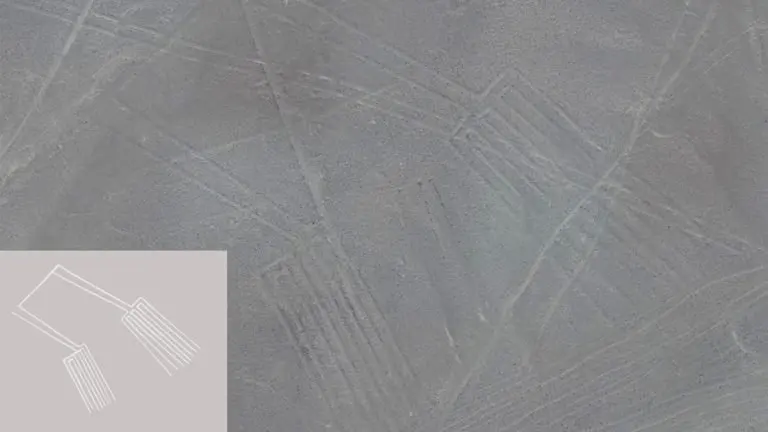Archeological sites might be static, but the cultures that produced them were dynamic and diverse. Some of them were completely nomadic, continually shifting positions sporadically. Some migrated vast distances, while others practiced seasonal migration following predictable patterns. Others built their civilizations right on top of previous ones, leaving behind convoluted layers of human activity to decipher.
As we systematically eliminate the more obvious sites, finding new ones becomes increasingly difficult when using traditional methods. Today, archeologists are increasingly using the predictive capabilities of Artificial Intelligence (AI) to identify new potential sites of interest. By analyzing existing data and historical patterns, archeology AI technology is transforming the way we discover and study the traces of ancient cultures, making identifying new excavation sites more achievable than ever before.
In this blog, we will discover how AI can be used in different tasks and areas of Archeology. The following applications will be discussed in detail.
- Locating New Excavation Sites
- Securing and Protecting Sensitive Archeological Sites
- Analyze Artifacts
- AI for Preserving & Restoring Artifacts
- Decipher Ancient Languages
About us: Viso.ai provides the end-to-end Computer Vision Infrastructure, Viso Suite. It’s a powerful all-in-one solution for AI vision. Companies worldwide use it to develop and deliver real-world applications dramatically faster. Get a demo for your company.
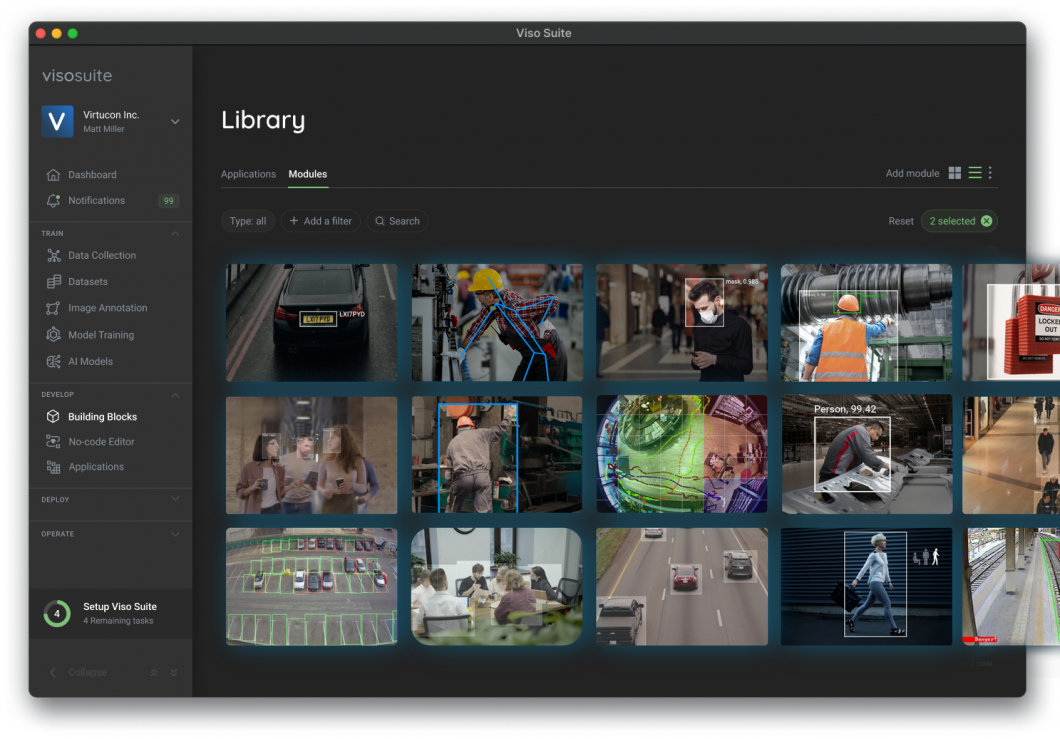
Applications of AI in Archeology
1. Locating New Excavation Sites
Predictive modeling AIs can help identify new sites for excavation by analyzing existing archaeological research data. A powerful example of this is using computer vision and AI to identify new Nazca Lines in Peru. These striking man-made geoglyphs are etched into the desert sands, covering a known area of nearly 1,000 sq. kilometers.
Despite their massive scale, they are difficult to see from the ground due to their surface-level features. The easiest way to spot them is from the air. However, this requires either launching manned expeditions or having researchers manually analyze aerial photographs.
Now, scientists are using AI-powered systems to help identify and find new Nazca lines. These intelligent systems are trained on existing images of known Nazca Lines. Early findings indicate that they can identify or eliminate potential sites 21 times faster than a trained archaeologist.
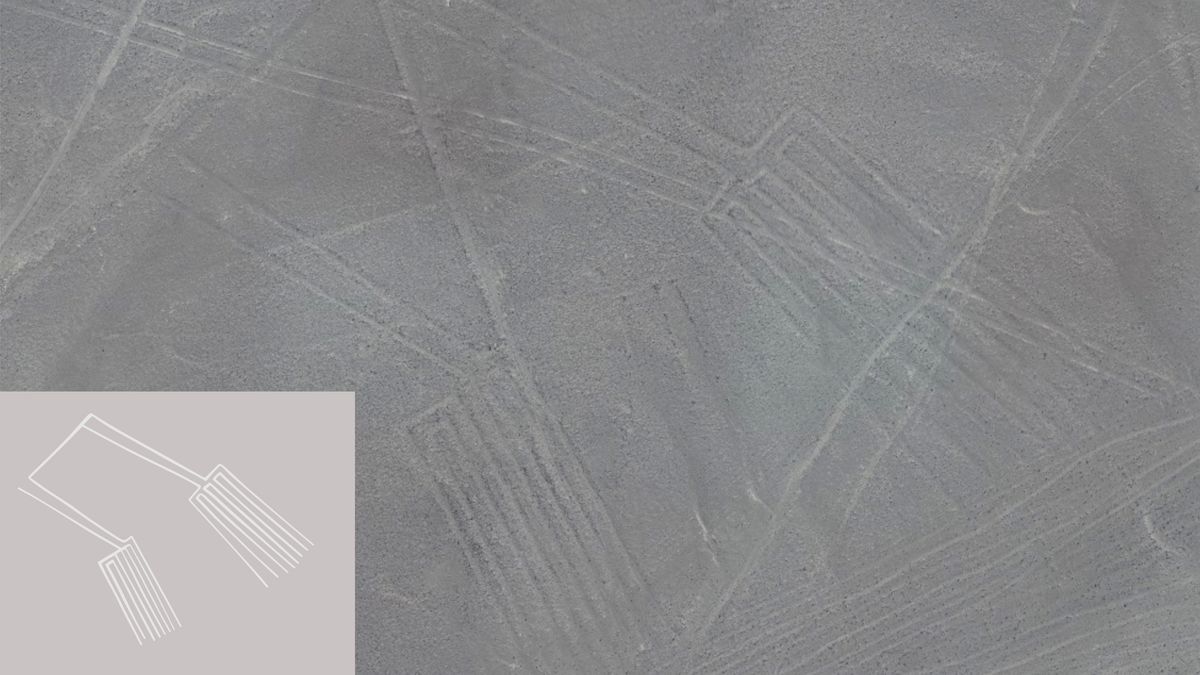
AI can also analyze the historical human movement and settlement patterns to predict the location of potential archaeological sites. Another study found that deep learning models can help identify Native American shell-ring-buildings in the American Southeast.
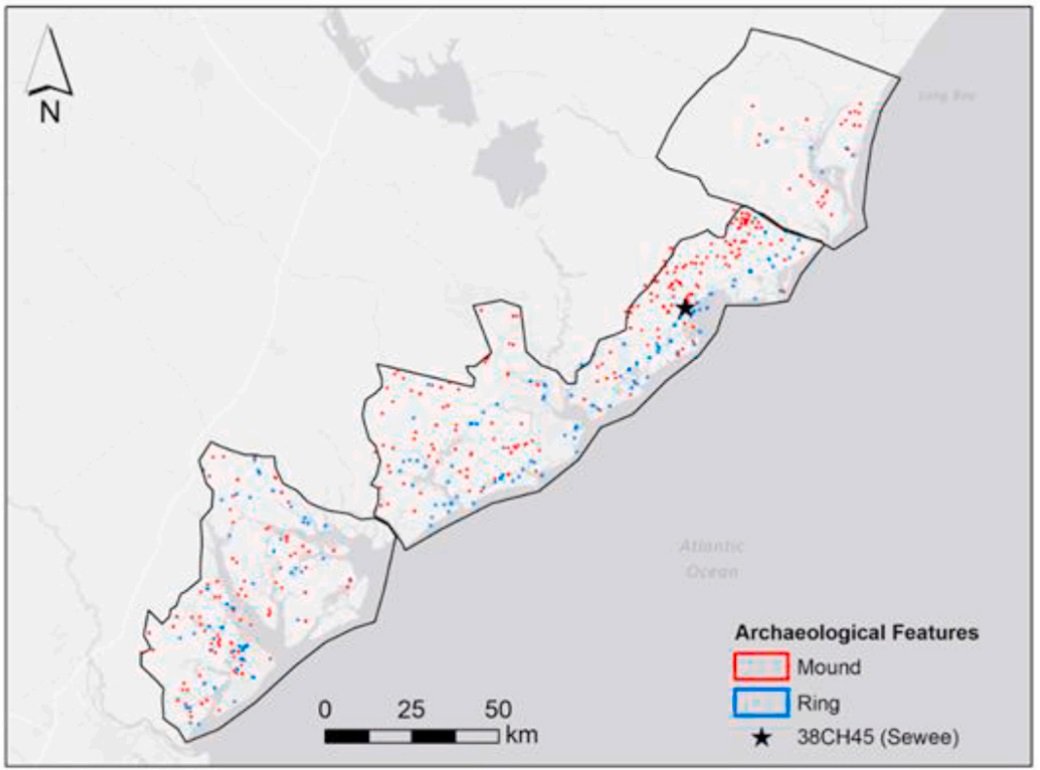
Researchers trained models using LiDAR data and those collected by Sentinal 1 and 2 satellites. The model aims to distinguish archaic shell-ring constructions from modern buildings or natural features. Using a Mask R–CNN (convolutional neural network) model, they achieved a detection accuracy of 75% and 79.5% for archeological shell rings and mounds, respectively.
Although less accurate, for now, the model also helped to rule out modern constructions with 59.5% accuracy.
2. Securing and Protecting Sensitive Archeological Sites
Archaeological sites are often located in remote or inaccessible areas and may be spread over large areas. This makes it difficult to monitor and protect these sensitive cultural heritage sites 24/7, whether it is from vandalism, environmental changes, natural disasters, or degradation.
To assist in conservation, researchers are using sensors with computer vision or AI to help monitor sites and detect threats. For example, acoustic modems and underwater wireless sensors are being used in Baiae, an underwater Roman settlement off the coast of Italy.
This “underwater archeological park,” open to the public, covers 435 acres and is a designated protected marine area. It requires constant monitoring to detect any damage caused by divers or environmental factors. However, changing sea conditions can interrupt wireless signals used to communicate between sensors and surface headquarters.
Researchers use AI and machine learning algorithms to continuously modify the network protocol and optimize the signal path between nodes, maintaining connectivity during changes in sea conditions.
In the ruins of Pompeii, a robotic sentinel dog called “Spot” patrols the streets, using visual sensors to look for signs of structural damage or undiscovered points of interest. Researchers use this data to carry out interventions and routine maintenance on the site.
3. Analyze Artifacts
Archeologists uncover streams of artifacts that must be meticulously analyzed and cataloged for further research and archiving purposes. Because of the sheer number and diversity of artifacts and the complex nature of human history, doing this manually is extremely slow, difficult, and prone to human error.
For one, most ancient artifacts that archeologists uncover are incomplete or damaged in some way. Secondly, throughout human history, cultures intermingled, evolved, or replaced each other, influencing each other’s art and crafting techniques.
Instead of clear delineations between cultures or eras, researchers often have to analyze minuscule changes and fine details to accurately describe and classify the artifacts. If we go far enough back in time, it can even be hard to distinguish man-made tools from natural features.
Once again, this is where the pattern recognition capabilities of AI and machine learning systems can save the day. In one study, researchers trained and tested a machine learning model based on PyTorch and Faster R-CNN, ResNet-50 using a data set of 6769 2D images of stone artifacts from sites in New Zealand, Egypt, and Australia.
Not only did the model achieve 100% agreement with original human-derived classifications, but it outperformed two human analysts in assessing the same set of images.

The model was also able to analyze and classify images much faster than what a human is capable of. This will allow for the rapid classification of historical artifacts without the risk of human error or bias.
4. AI for Preserving & Restoring Artifacts
On top of helping to “fill in the gaps,” AI may also help archeologists preserve and restore artifacts. An artifact may consist of hundreds, if not thousands, of individual fragments, mixed in with other debris. This makes collecting, analyzing, and reassembling fragments one of the most labor-intensive and frustrating tasks in archeology.
However, AI systems have the potential to be exceedingly more efficient at this than humans. Using computer vision, they can analyze fragment features and model how they fit together in no time.
For example, researchers in Italy are already developing AI robots to piece together ancient frescoes. It is called the “RePAIR” project, with a concept to create an AI-powered robot capable of analyzing fragments of art to determine how the pieces fit together. It will use computer vision technologies to identify, calibrate, and classify pieces. Not to mention machine learning to predict a complete 3D model of the artifact before starting the reassembly procedure.
Other areas of study revolve around using AI to restore or enhance historical works of art. AI tools are already effective at denoising, inpainting, color correction, super-resolution, and other image-enhancing techniques. So, researchers can study digitally enhanced images of artworks in greater detail without touching the original piece.
This can give them greater insight into the artwork’s original appearance or the techniques used by the artist. On top of enriching our knowledge, it also provides a model to restore artworks with greater accuracy.

Equipping the robot with articulation will also allow it to reassemble artifacts autonomously. This has the potential to save researchers a lot of time and helps minimize the risk of further damage due to human mistakes or mishandling.
5. Decipher Ancient Languages
AI technologies capable of understanding and mimicking human language have burst into the scene in recent years, continuing to evolve and improve rapidly. However, the potential of Large Language Models (LLMs) and Natural Language Processing (NLP) doesn’t stop at mastering modern languages. They are also being used to help researchers decode and interpret ancient languages, once thought lost to time.
Even ancient languages present challenges. Typically, only a few experts worldwide know languages like Cuneiform, for example, and can translate them. Training new linguists in using these languages can take years, and results can get muddled due to individual interpretation. On the other hand, you’d only have to train an AI model once, and you’ll have a lifelong, on-demand translator.
Researchers have already developed an NLP solution that can instantaneously translate Akkadian Cuneiform into a transliterated Latin script. This script acts as a universal language accessible to archeologists globally. Even at this early stage, they were able to achieve accuracies of up to 70% on unlearned data and 97% on learned data.
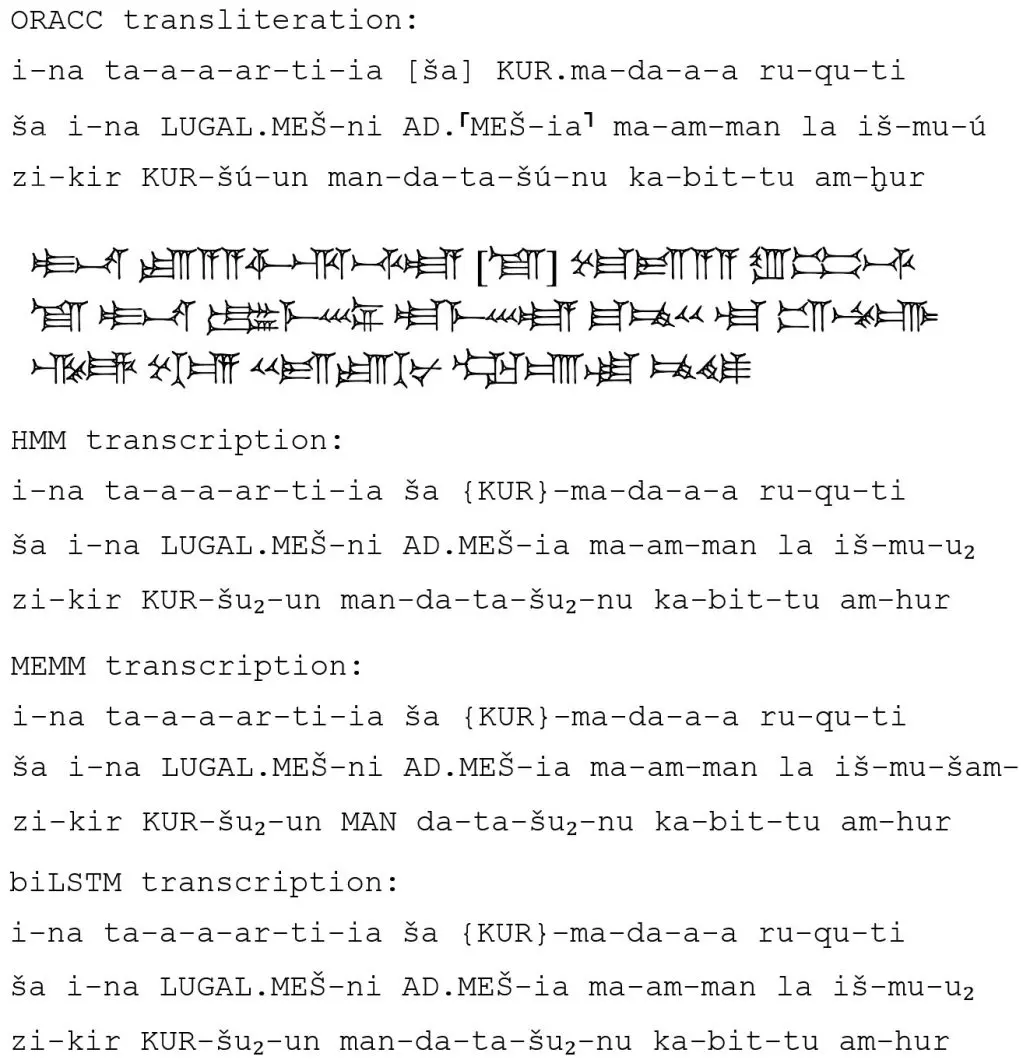
Unlocking an ancient language can significantly alter our view of historical understanding and open up new fields of study. A prominent example of this is how the Rosetta stone led to a revolution in Egyptology. Now, AI and machine learning technologies might be the new, universal Rosetta Stone.
It’s hoped that new advancements will help researchers crack languages that have not been solved, yet. Research is already being done on using AI to interpret tablets containing the so-called “Linear A” language dating to 1800BC.
What Does the Future of AI Archeology Look Like?
Archeology may be an old science, but using AI to solve some of its most persistent challenges is still a relatively new field. Many of its applications are still in the initial stages of research and experimentation but show promising results.
Researchers are quickly learning to leverage the power of AI to help reveal new mysteries left behind by ancient civilizations. Shedding light on details we missed or new potential archeological sites empowers archeologists to make discoveries and rethink what we thought we knew. As more data is collected, the accuracy of these systems will improve further, unlocking new windows into the past for potential archaeological exploration.
Soon, these applications will largely revolve around recreating virtual reality reconstructions, augmented reality experiences, or 3D models for virtual tours or educational software. Virtual experiences already exist, allowing users to experience historical events and places such as Dunkirk, Viking battles, Rome, and Washington.
However, these projects are still human-made, using time-consuming processes that are hard to repeat. Soon, we might be able to procedurally generate entire immersive experiences using only computer vision and AI.
Another field to keep your eyes on is that of physical generative AI. This may soon allow us to generate physical copies of ancient artifacts or missing fragments. On top of restoration and preservation, archeologists may be able to create exact physical copies for research and education.
Explore our other blogs that explain how AI can be used in different industries or sectors.
- 7 Cutting-Edge Applications of AI in Mining
- Leveraging AI Vision in Crowd Control With Viso Suite’s Best-in-Class Infrastructure
- Computer Vision Applications for Sustainable Forestry Solutions
- AI in Finance: Top Computer Vision Tools and Use Cases
- AI in Retail: The Ultimate Guide
- Top Applications of Computer Vision in Agriculture
